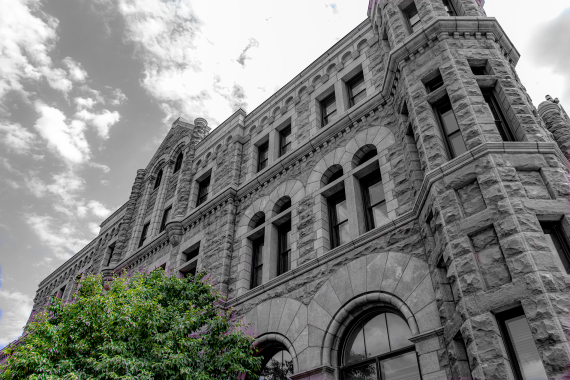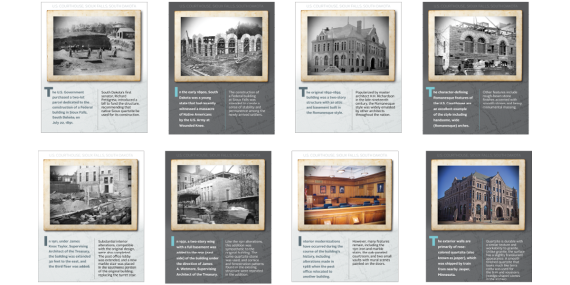Region 8 Courthouse Celebrates Milestone
The historic U.S Courthouse in Sioux Falls, South Dakota is a rare gem and the oldest United States courthouse in the Rocky Mountain Region.
Built in 1895, the courthouse is a centerpiece within the city and recently held a 125 year celebration of service within the state and Dakota Territory.
“South Dakota became a state on November 2, 1889,” said Dr. David Brechtelsbaurer, board member of the Minnehaha Historical Society. “One of the first orders of business was to get a functioning judiciary system and a building for them to serve in.”
The construction of the federal courthouse was originally intended to create a sense of stability and permanence among the newly arrived settlers following the actions at the Wounded Knee Massacre. To bring closer ties to the community, builders used locally sourced Sioux Quartzite. This particular stone was used because it is highly resistant to erosion and the color is a ruby pink to catch the eye.
The original design was a two-story building made only of masonry, there was no steel framing at that time. All construction was completed using either manpower or animals to move earth and heavy blocks. Over the years, many additions have been built onto the original structure to add more space and to modernize it.
“Construction for this building, in 1895, cost $152,000. That would equate to $4.5 million in 2021 dollars,” said Brechtelsbaurer.
Significant Cases
Hundreds of judicial rulings are made in the courtrooms within the U.S. Courthouse each year but there were three cases with particular significance that have been handled in the District Court of South Dakota.
The first one occurred after the Wounded Knee Massacre with the trial of a Lakota Sioux named Plenty Horses who shot Lieutenant Edward Casey of the Cheyenne Scouts. Plenty Horses went on trial for murder and he feared he would be hung but his lawyers argued that a state of war was declared. Judge Alonzo Edgerton presided over the case and when Army Captain Frank D. Baldwin testified, he confirmed the Sioux and the U.S. Army were at war so the judge declared Plenty Horses not guilty of murder and he was released.
The second significant case strangely involved the Federal Bureau of Investigation’s public enemy #1. In a remote section of the state, Verne Sankey kidnapped the son of a wealthy Denver man. After the ransom was paid, Stankey went on the run but was soon captured and set to stand trial in the U.S. Courthouse. He did not live to see the courtroom but his wife, who was an accomplice, was tried and acquitted.

The third case is an example of how U.S. District Judge Warren Urbom handled a delicate situation. After the Occupation of Wounded Knee in 1973, 150 defendants, all Native American, stood trial. Due to the complexity and tense nature of previous Native American trials, Urbom made the decision to treat the defendants with respect.
He allowed them to testify in their native language, he requested the bailiff not tell everyone to stand when he entered the courtroom and he even allowed some tribal leaders to sit in the jury box. Instead of the standard practice of swearing on a Holy Bible, the judge allowed the defendants to swear on a medicine pipe.
His gestures of respect were well received and there was no trouble. All Native Americans in the courtroom eventually did stand when he entered the courtroom out of respect for him. Charges were dismissed for 100 defendants and the judge only found six of the remaining guilty.
Preservation of History
While many old buildings are torn down without regard to their historical significance, this building remains. As the oldest in the Region 8 portfolio, GSA has kept its history and legacy alive through preservation.
“Buildings such as these have a soul and a provenance,” said F. Richard “Dick” Lyford, President of the Eighth Circuit Historical Society. “It is the providence and memories preserved in the finished product that serves as a reminder of our legal system that will be fair and equitable in the future, as it has in the past.”
American Legion Post #15 also participated in the event providing a color guard and a chorus which sang the National Anthem and God Bless America.

 U.S. General Services Administration
U.S. General Services Administration

